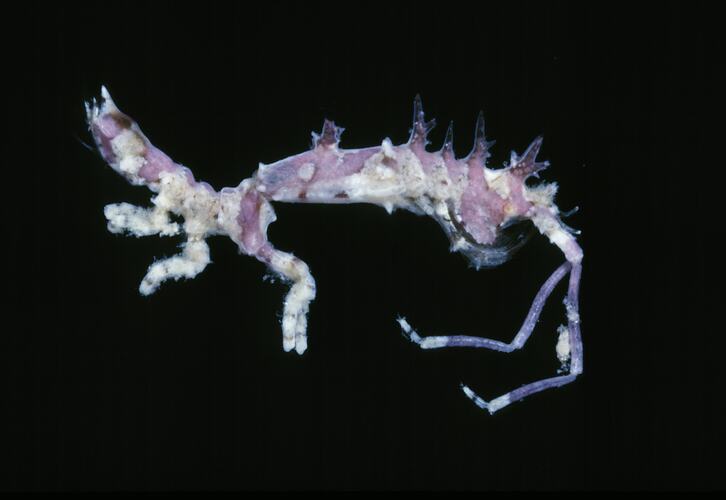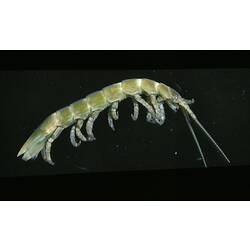General Description
A diverse suborder of isopods, valvifera is made up of twelve families . Diversity is greatest in colder waters of temperate shores and ocean basins. Valviferans can be found in a variety of colours, textures and sizes with varying diets and habitats.
Biology
Valviferans are characterised by their valve-like uropods (posterior appendages that aid in movement). Diverse forms include the bizarre-looking skeleton louse and sea centipedes. Although many species are omnivorous scavengers some species are herbivorous, and cannibalism has also been observed. Many species display vivid colours and spiny or rugose textures that allow them to camouflage into their environments. Although valviferans can be found worldwide, higher diversity is seen in temperate to cool oceans. Preferred habitats depend upon the species, ranging from shallow coastal rock pools or reef beds to depths upwards of 500 m. One of the largest valviferans, Glyptonotus antarcticus can grow up to 9cm long. It is covered in small hair-like cuticular growths that are thought to prevent other organisms from latching on to their bodies.
Distribution
Worldwide, some tropical species but mostly temperate or Antarctic waters.
Habitat
Marine intertidal to deep sea benthic.
More Information
-
Animal Type
-
Animal SubType
-
Brief Id
Valviferan isopods are marine crustaceans that have a unique tail fan structure that folds laterally to cover the pleopods (swimming legs).
-
Maximum Size
9 cm
-
Habitats
-
Diet
Omnivore
-
Diet Categories
Algae, Seaweed, Crustaceans, Echinoderms, Plankton
-
Endemicity
-
Commercial
No
-
Depths
Shore (0-1 m), Shallow (1-30 m), Deep ( > 30 m)
-
Water Column Locations
On or near seafloor
-
Taxon Name
-
Scientific Author
Sars, 1882
-
Common Name
isopod
-
Phylum
-
Subphylum
-
Superclass
-
Class
-
Subclass
-
Superorder
-
Order
-
Suborder




